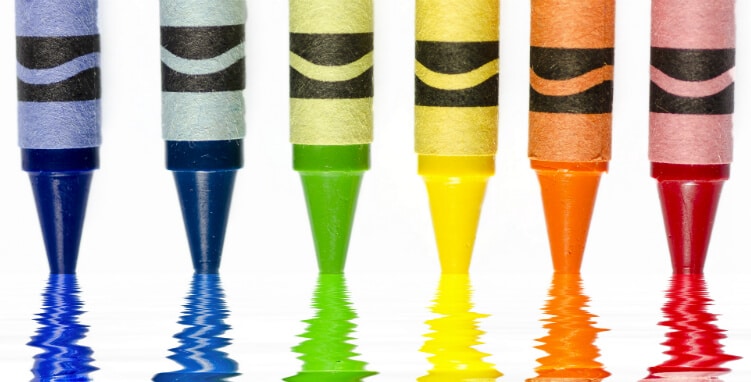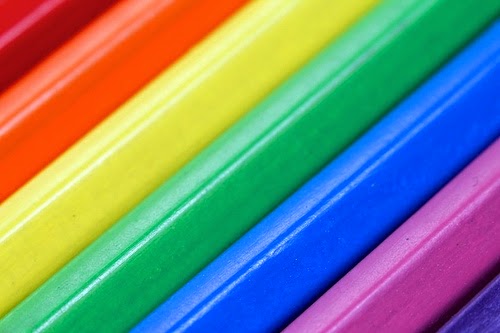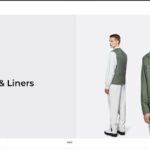My content is reader-supported by awesome people like you. Which means I could earn a commission. Learn more here!

Have you ever even wondered this?
How do colors affect my website?
If not, keep reading.
Websites often look at color for the sole purpose of triggering a response from visitors. Of course, everyone has their favorite colors that they gravitate to whether they realize it or not.
However, a skilled web designer also understands how important color is for the site. Colors can signify all kinds of meanings that make users gravitate towards certain products and services found on your site.
Colors mean all types of things to people, but this guide gives you some insight into the ways colors are perceived and how to pick the right color palette for your web design.
The Power of Color in Business
Color will always have a powerful subconscious effect on humans. In every part of our lives, we view different colors. If it’s cloudy outside, the world is grey to us, foreboding and somber.
If it’s sunny outside, the world is bright and effervescent. When you apply information about color to business, then you want to improve your business profile and marketing by using colors appropriately.
In website design, colors mean everything. Colors have several meanings, but it’s hard to escape what they mean for businesses. Most businesses use red because it inspires people to take action. That’s why so many call-to-action buttons and links on websites are red in color.
Across the spectrum, there are also different ways to partner one color with another so that they compliment and make your website easier on the eyes.
People typically don’t like to see sites that are of one bright color such as yellow or neon green. This tends to make visitors bounce off a site instead of looking for information.
The way you choose to incorporate color theory into your web design should be strategic but also match your brand. If you are just starting out with your brand, color choices typically start with your industry.
For example, industry-specific colors might be green for eco-tourism or cash savings. Purple may also apply to fashion or beauty. When you start to pick out the colors of your brand, it’s important to pay attention to how those colors will reflect for your industry.
While you don’t want to pick the same colors as competitors, you want to be able to fit into your industry and evoke a response from users that won’t be confused if you pick a strange color. For example, pink might be a difficult color to sell with power tools.
The Colors of Walls
Did you know that the colors of a wall can change how a person feels temperature? Warm colors like red and yellow actually think a room is warmer just because of a color.
Cool colors like light purple and blue often make people believe that a room is colder.
Throughout history, businesses have been using this human psychology to save on heating and cooling costs while also giving people the notion that their coffee shop is the warmest in the winter because of orange walls.
Evoke a Response
Color also evokes emotions from people. People of different cultures often view colors very differently.
For example, yellow might make you think of a sunflower, but it might make someone else think of a funeral since yellow can be a symbol of death. Everyone has personal proclivities for colors as well.
You shouldn’t base your color choices on avoiding what people don’t like. Rather, you should make color choices based on what the emotional response that you are likely to receive from the majority of visitors.
What Do Colors Mean
The color green has been linked in many studies to creativity. People generally like the color green, and it has a positive association with regrowth, rebirth, nature, purity and so forth.
Sites that feature green may be eco-conscious. Others may just associate the color green with genius intelligence. By researching what colors mean, you can get a better idea of the responses to your website. Here are a few basic color meanings:
Red: Aggression, anger, rage
Purple: Feminine, lust, passion
Blue: Calmness, sadness, gentle
Pink: Feminine, happy
Black: Strength, foreboding
The way you use color is just as important as the color choices that you make. All websites benefit from a color palette that is predictable but also creative. You want to highlight certain parts of your site while also making sure that it has a unified feeling overall.
What Colors Encourage Visitors to Click
Whether you want your visitors to click on an ad, read a story or just buy something, you likely have different links, buttons and check out buttons (check out the article on “Data Driven “Add To Cart Button” Information: Something To Consider” for more on the “add to cart button”. What should the colors of these be?
There are five popular color choices used in web design that will bring your visitor’s attention.
Red: There’s a reason Pinterest is red. Google also uses red for most of its buttons. Red is associate with anger, but it’s also the color of love. This strong, dynamic color is guaranteed to get a response from visitors.
Orange: Amazon is famous for its love of orange. This warm, vibrant and energizing color is not as intense as red but has a lot of spunk. Orange is also considered aggressive.
Dark Blue: Blue tones are found everywhere online. It’s also repetitive. However, blue can be changed with a nice palette. If you think of Facebook, the darker blue tones here have been shown to make people feel safe. If you want a customer to feel safe about clicking a link, a blue tone is the best way to go.
Green: Groupon uses the color green because it’s both safe and promotes the idea of money savings. Green inspires optimism and creativity. Green works best with sites focused on eco-conscious products, recycling or even money saving.
Purple: It worked for Yahoo. Imagination, creativity, dignity, royalty, abundance and passion are all used to describe this versatile color. Most fashion, beauty and lingerie sites use some type of purple in their design. However, Yahoo uses it because its bright and noticeable in a crowd.
Is Monochromatic Considered Colorful?
Monochromatic websites also have their place in their sun. A monochromatic site incorporates the use of black, white and grey tones with tiny pops of color in some cases. The pops of color act as accents to the monochromatic style of the rest of the site.
People have an affinity for bold black. It’s strong yet mysterious and modern. Black also evokes feelings of elegance and power. Grey is a rather neutral color that can be almost invisible but still promote feelings of peace.
White is the ultimate cleaning power when you need to express openness, cleanliness and simplicity.
Monochromatic sites work for most industries, especially if you use the accent colors to benefit your audience. In addition, colors used with monochromatic designs should be bright and pop out at you. Orange, red, yellow and even neon green are great uses of this idea.
Colors in Mobile Design
Experimenting with color in mobile is a good thing. Obviously you want your site to be readable on all devices, which means that simple color palettes with bright pops of color tend to work very well for mobile.
Color as accents is a popular trend as well because it allows your site to catch attention while mobile browsers look for information.
However, sites also use colors to make a statement. For example, they may have a background color that is completely red with white logos and text for a mobile version. Other sites just stick to making buttons a certain color on mobile as it makes them easier to find and click.
Color Trends
Then there are sites that break the rules. Some sites have a knack for breaking the rules and using new colors that people appreciate even if they are not traditional.
One color trend is retro color themes. These color schemes feature yellows, browns and blues with some pops of red. However, what’s most noticeable is that they lack any real “bright” pops of color.
You won’t see any neon colors on these websites.
How you use color for your business website can mean a great deal to getting visitors and keeping them coming back. While colors have different meanings around the world,it’s more important to match your industry with colors or even to use a color as a way to think outside of the box when you need to.
There are some color choices that are better for accents as well. By taking a look at some color palettes and looking at your brand, your site will benefit immensely from a sound color theory that attracts attention for all the right reasons.
So what are your thoughts in regards to colors and your website and how they can change conversions and more? Did this make you think a bit more about analyzing your website, or your soon to be website your looking to create? I would love to hear your feedback.






Leave a Reply